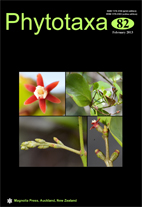Abstract
In southern South America, Andropogon sect. Leptopogon is represented by both diploid and hexaploid species. In order to compare the synflorescence structures and floral arrays in relation to ploidy levels in species of Andropogon, the section Leptopogon was used as model. In this study, the synflorescence structure was typologically characterized. The structural analysis was based on the typology system developed by Troll and Weberling, which has proved useful in describing inflorescences. A comparative analysis of the variations observed in the structure of the synflorescence and a morphometric analysis using principal component analysis were carried out. These results revealed that diploid and hexaploid species present differences mainly in the following parameters: synflorescence length, number of internodes of the enrichment zone main axis, number of internodes and length of paracladia of the trophotagma, number of long paracladia per unit of inflorescence, length of hairs on articulated rachis internodes, pedicellate spikelet length, pedicellate spikelet width, pedicel width, length of hairs on pedicel, sessile spikelet length, awn length and floral system arrangements. This study provides a useful tool to distinguish between diploid and hexaploid species of Andropogon sect. Leptopogon. We propose naming the group of diploid species from Central and South America as the Andropogon selloanus complex.

